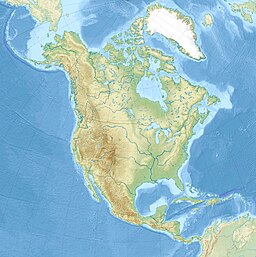| Lake Iroquois | |
|---|---|
 This map shows the valley of the Mohawk River, through which Glacial Lake Iroquois crossed the mountains to the Hudson River Valley. | |
| Location | North America |
| Group | Great Lakes |
| Coordinates | 43°42′N 77°54′W / 43.7°N 77.9°W |
| Lake type | former lake |
| Etymology | Iroquois or Haudenosaunee (/ˈhoʊdənoʊˈʃoʊni/; "People of the Longhouse")[1] |
| Primary inflows | Niagara River |
| Primary outflows | Mohawk River to the Hudson River |
| Basin countries | Canada United States |
| Max. length | 196 mi (315 km) |
| Max. width | 57 mi (92 km) |
| Surface elevation | 345 ft (105 m) |
| References | United States Geological Survey, George Otis Smith, Director; The Pleistocene of Indiana and Michigan and the History of the Great Lakes; Frank Leverett and Frank B. Taylor; Department of the Interior, Monographs of the United States Geological Survey; Volume LIII; Washington; Government Printing Office; 1915 |
Glacial Lake Iroquois was a prehistoric proglacial lake that existed at the end of the last ice age approximately 13,000 years ago.[2]
- ^ Beauchamp, William Martin (1905). A History of the New York Iroquois. New York State Education Department. p. 165. Retrieved May 7, 2016.
- ^ Richard Foster Flint (2008). Glacial Geology and the Pleistocene Epoch. Read Books. ISBN 978-1-4437-2173-8.
